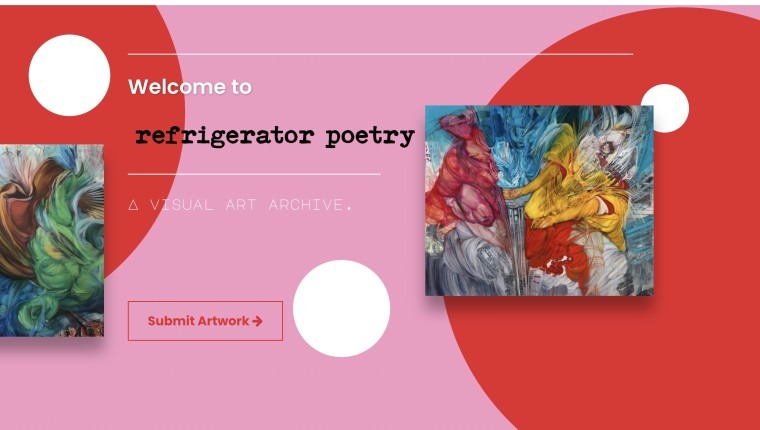By Tom Winchester
Digital Pinellas
. . .
Digitization has been somewhat of a slow boil since Y2K. Lately it seems like everything’s gone digital. Our reliance on constant connectivity feels like it’s at an all time high. Digital media rule.
Digital art forms are becoming more commonplace. Viewers, especially laypeople, have become fluent in the vernacular of digital art and more familiar with digital artists. It’s gotten to the point where every image we see is assumed to have been created by someone behind a computer.
Some of the art world’s most recently adopted forms, such as online exhibitions and NFTs, are arguably the next to become perennials. Online exhibitions are the salons of our time because they allow for a democratized approach to curation.
NFTs are collectible digital images that can only have one official owner at a time. Because of their inherently artist-centric market paradigm, NFTs could be the downfall of modernity’s idea of ‘the starving artist.’
Both forms offer advantages that the traditional analog world couldn’t, which means they can have staying power.
In order to become more familiar with these two new forms, I’ve asked two Bay area artists about their current digital projects. Perry Neri is the Director of an online exhibition and archive platform called Refrigerator Poetry, and Maria Paula Garcés creates NFTs and offers courses on how to make them.
I asked both artists five questions about their creative processes.
. . .
Perri Neri
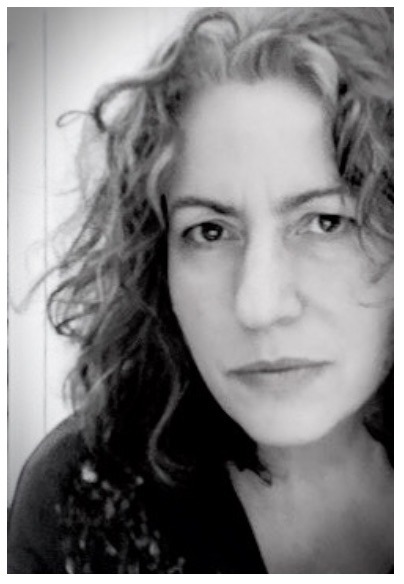
. . .
Why did you start Refrigerator Poetry?
Perri Neri: Mark (Refrigerator Poetry co-founder) and I talk often about art. During the pandemic, we started talking about the problems artists face while navigating the “art world” prior the pandemic, and how we just couldn’t predict what would happen now. The landscape was changing very quickly.
Galleries, particularly small and mid-tier galleries were shutting down – but artists were still making work. Many moved their studios into their kitchens, changed their materials, found new ways of making their art.
I was very curious about it. It felt like a very important time to document. Mark and I both have a love of Art History and related very much to this moment as time that would be reflected in the art. We wanted to see what artists were making! That sentiment very quickly turned into how we wanted to show it.
. . .
refrigeratorpoetry.com
. . .
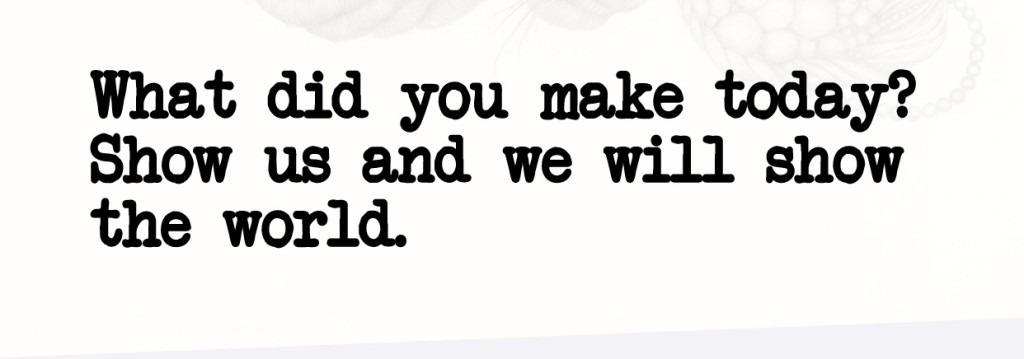
. . .
I have the perspective of a struggling working artist with the experience of falling through every crack and gap to try to get exposure. Mark’s problem-solving perspective comes from his 40 years of architecture practice and Doctorate in Urban and Public Affairs.
We did our research and discovered. . .
There is currently no venue moment for ALL visual artists to display their work regardless of the means to market their work, representation, or the judgement that their work is not art.
There is currently no living ongoing visual archive to preserve and document the work of each artist in the venue as a moment in art history and in our collective social memory.
There exists a closed loop of art history taught in academia that is limited to standard methods and artists due in part from the lack of exposure and an archived current database of work accessible to educators.
The primary way that galleries choose artists is through their professional relationships in the art world, not from the artist who comes into the gallery with a resume and a dream.
Emerging artists with little sales and exhibition experience often struggle to find doors that will open. Artists need to develop an audience before approaching a gallery for representation. Galleries want to know that the artist understands how to promote and market themselves. It is the responsibility of the artist to build and maintain an audience.
. . .
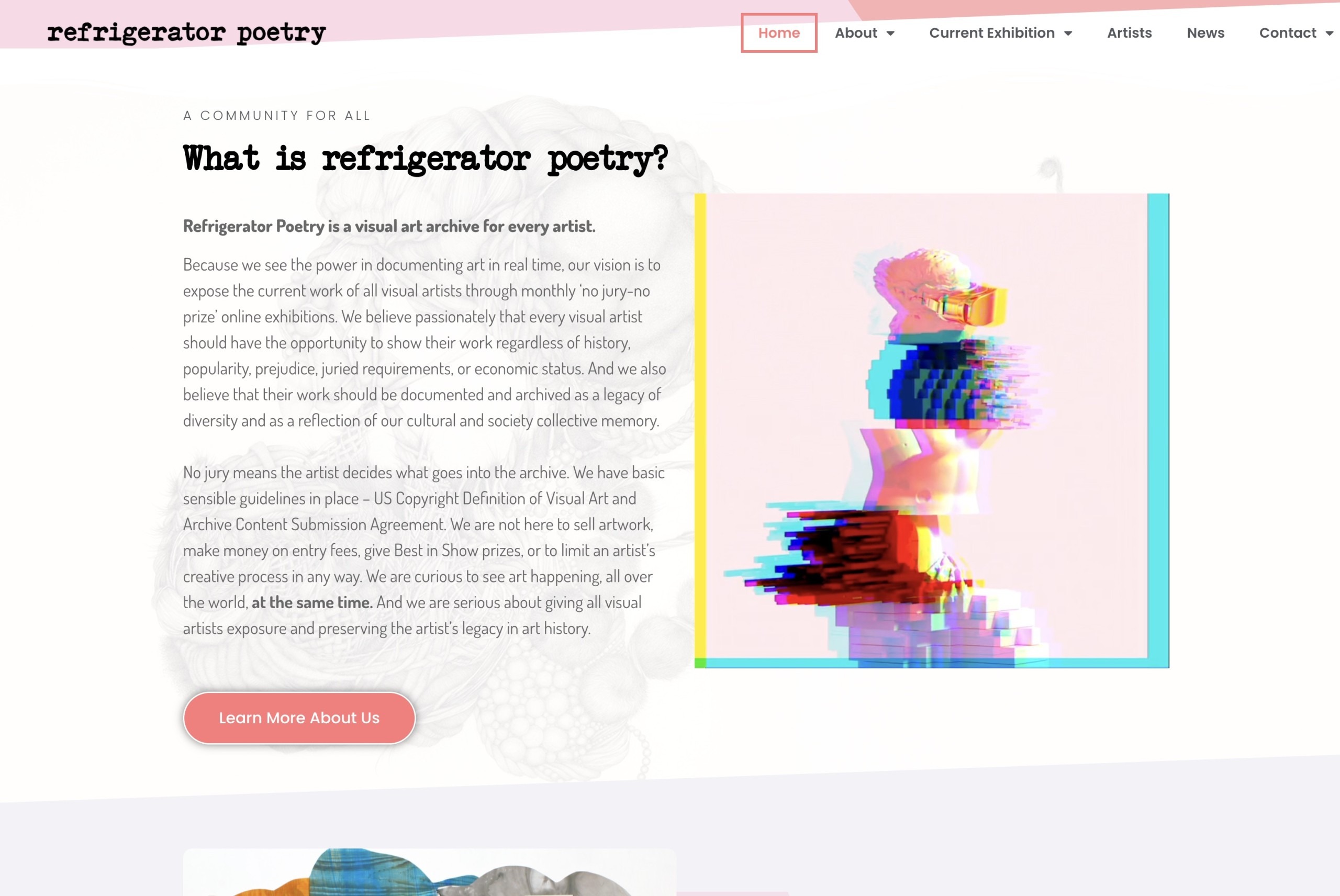
. . .
We developed our mission – establish a community, regional, national and global venue welcoming all visual artists to expose their work and record their work for posterity.
We believe passionately that every visual artist should have the opportunity to show their work regardless of history, popularity, prejudice, juried requirements or economic status and that their work should be documented and archived as a legacy of diversity and as a reflection of our cultural and societal collective memory.
. . .
In your view, what are the benefits of having an online platform?
PN: Ultimately, we want to see what visual artists are doing all around the world at more or less the same time! An online platform on the world wide web, well, what can be better than that!
The online gallery exhibitions are open 24 hours a day, 7 days a week. And we have the capability of archiving them in perpetuity.
We are all about exposure. We say we want to show the world – we mean visual artists, yes, but also galleries, curators, collectors, art historians, educators, writers, gallerists.. . .
. . .
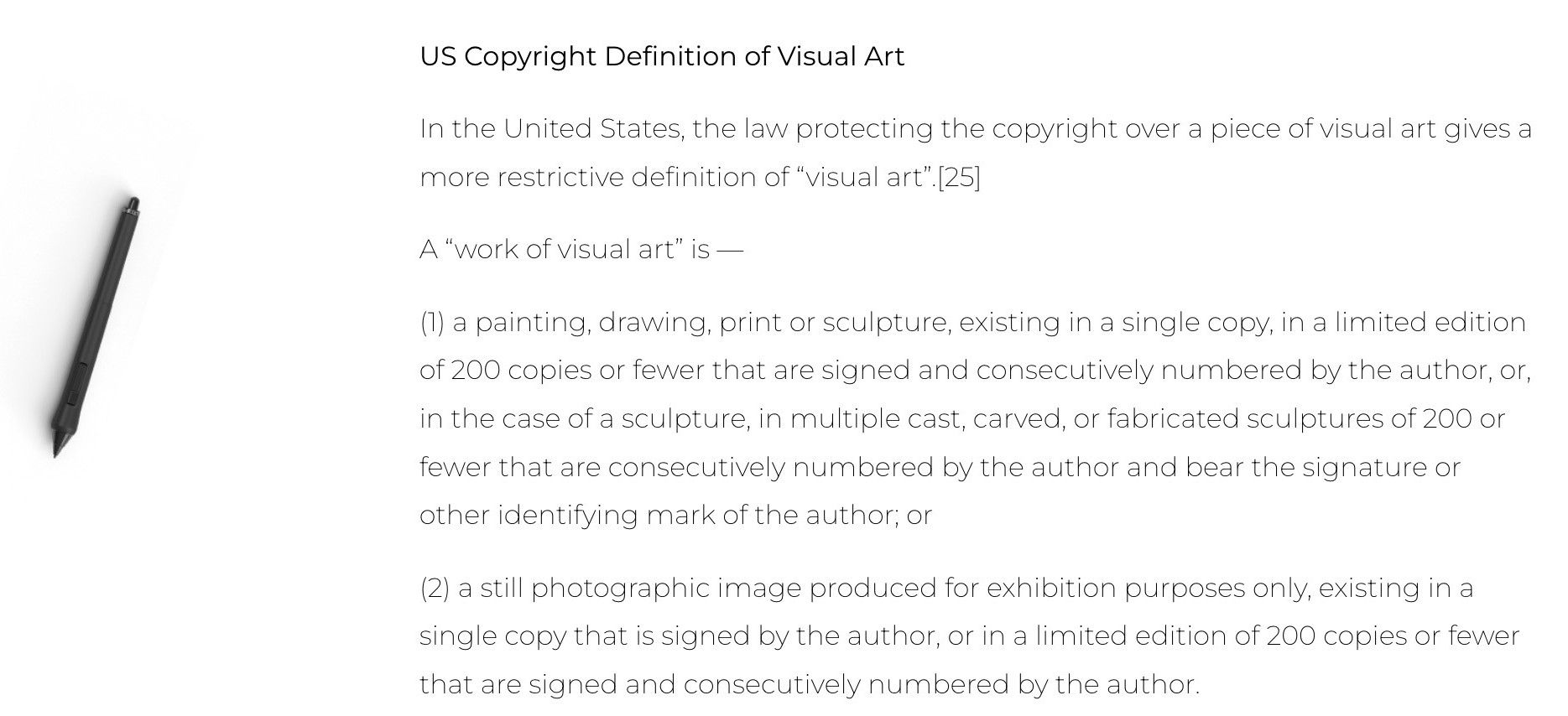
. . .
. . .
By dedicating an entire page of your website to the US Copyright definition of visual art, it seems you’re emphasizing the legal side of the art world. Is part of your mission to educate artists in the business of art?
PN: We use the “no jury – no prize” term to say that we are not judging what is or what is not art.
However, we needed some guidelines in place because we are NOT in the business of selling art. For example, one of the many venues I tried as an artist was the “Art Festival.” I had my tent and my sandbags and hung my work on panels hoping to get a ribbon with a grand prize check. I often had my “booth” located next to mass-produced jewelry, purses, coffee mugs, and my favorite, wooden toilet paper holders and children’s potty chairs.
Much to my surprise, there was an actual definition that I could use that was not a personal, subjective point of view. Maybe it educates artists, but mostly I think it educates the public who may not think about the differences. Most artists get it.
. . .
Have you seen any trends in the artworks submitted?
PN: I have seen common threads usually in palette, and sometimes in the line. I notice the landscapes are mostly quiet, or meditative. And the figures are usually intense with anxious energy.
. . .
What can we expect to see with Refrigerator Poetry in the future?
PN: Expect to see work from all over the world and a wider variety of genre and material. I am also reaching out to art historians, students of art history, writers and journalists (hint hint), to look at the archive as a whole or at individual exhibitions and write about them or even one of our artists – and send us the essay or editorial or critique!
We think visual artists are everywhere and we are figuring out a way to reach them all. Not everyone has access to a computer or a way to send us a digital image. This is a problem we are determined to solve and will require outreach. It’s a big task and we will need lots of boots on the ground, but we want to figure this one out!
You can also expect to see an on-the-wall gallery exhibition much in the way the Society of Independent Artists did it in 1917. My goal is to establish an Annual Refrigerator Poetry Gallery Exhibition in a community art space, or partner with a gallery or art space in the Tampa Bay area. We will invite all Refrigerator Poetry Artists to send us one artwork and we will show Tampa Bay and archive it in perpetuity in the archive, of course.
. . .
You can view Refrigerator Poetry’s monthly exhibitions
at refrigeratorpoetry.com/exhibitions.
All visual artists age 18 and older are welcome to share work
in these monthly online exhibitions. Find the details here.
. . .
Maria Paula Garcés
. . .
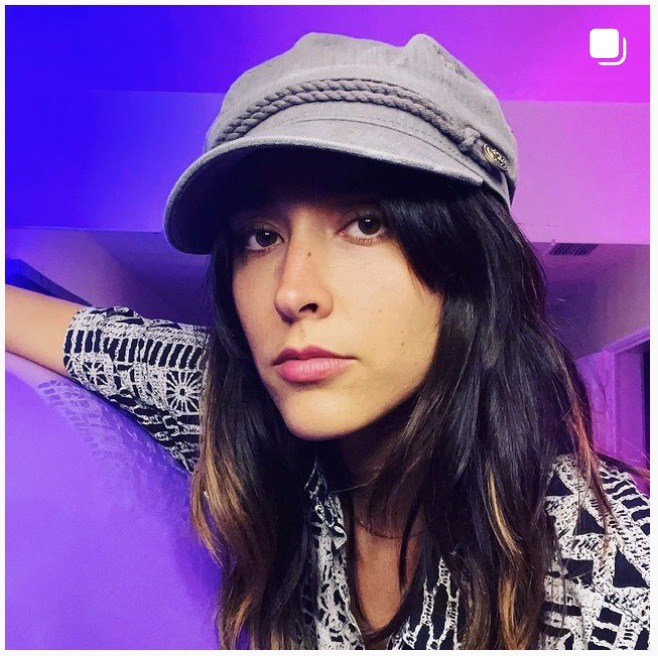
. . .
What inspired you to offer a class creating generative artworks that can be minted as NFTs?
Maria Paula Garcés: I was curious about learning how to create NFTs, but I felt like the format of the resources and tutorials I found were super complicated. So I simplified it for myself in a file and then realized that anyone, when guided through the content, could easily start generating their own NFTs.
At that moment, I decided that I wanted to share this and help graphic artists easily add generative art NFTs to their skill set whether for personal use, or as an added skill for an employer.
. . .
In your view, what’s the one thing visual artists should know about NFTs?
MPG: Unless you’re an influencer, NFTs are not easy money. A lot of people are jumping on the NFT bandwagon and losing too much.
I have no doubt that NFTs will change the world but right now there is too much hype in the space causing a lot of market distortion. Just because it’s an NFT doesn’t mean it’s valuable.
I believe the true, world-changing value of NFTs is not just in the beautiful art, but in their underlying utility, especially as it relates to revolutionizing property rights and reducing corruption.
. . .
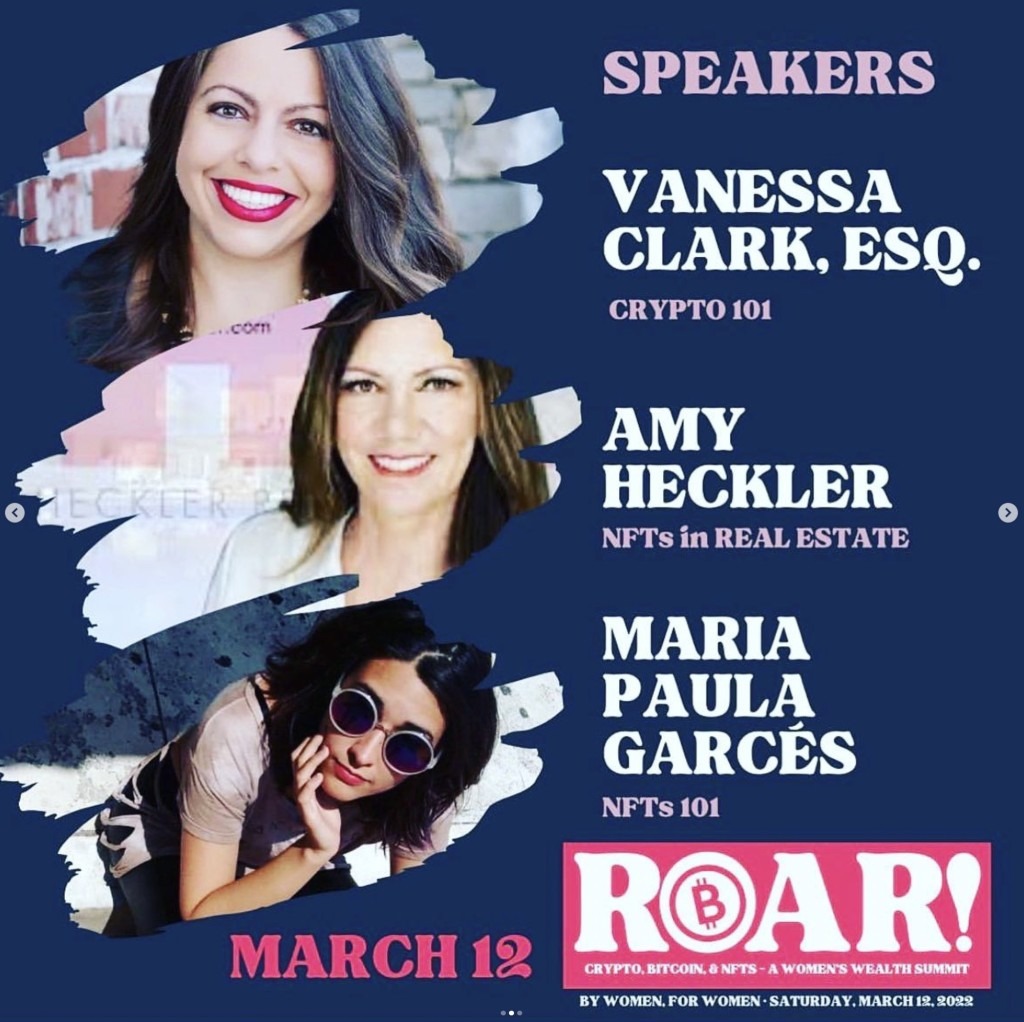
. . .
What do you think is the next trend with NFTs?
MPG: I believe the next phase of NFTs will be around gaming. There are already several games that have merch as an NFT but that will become commonplace as new games are developed.
It’s amazing that being a gamer is becoming a bona fide profession and personally, I love how people in developing countries are able to level up and make a good living off of playing crypto-based games. A great example of this is Axie Infinity and how it’s been a significant source of income for players in Latin America.
. . .
Which digital artists inspire you?
MPG: Well, it’s not exactly a digital artist but I love Sandbox’s aesthetic. They sell items for their metaverse on Opensea and it’s just the coolest stuff. I almost bought a “turtle duck” for what was then $27 before SAND went from .70 cents to $6 in the span of a week and a half. Oh well. When you’re in crypto you get used to this stuff. Everything is still so new that there will always be opportunities for the next 5-10 years before things get saturated.
. . .

. . .
Are you going to offer another class? If so, when?
Yes, I’m having another NFT workshop March 23 at NOVA 535 in St. Pete. I have a lot of projects coming up so I won’t be hosting any more workshops for a good bit, so I made it free and open to everyone! Just reach out to me on insta at @esotericslice to get registered.
Find Maria’s free March 23 NFT Workshop for Beginners here.
